#stanza della segnatura
Text

THE SCHOOL OF ATHENS, RAFFAELLO SANZIO 1509-1511. Stanza della Segnatura, "Vatican Rooms", interior of the Apostolic Palaces.
31 notes
·
View notes
Text

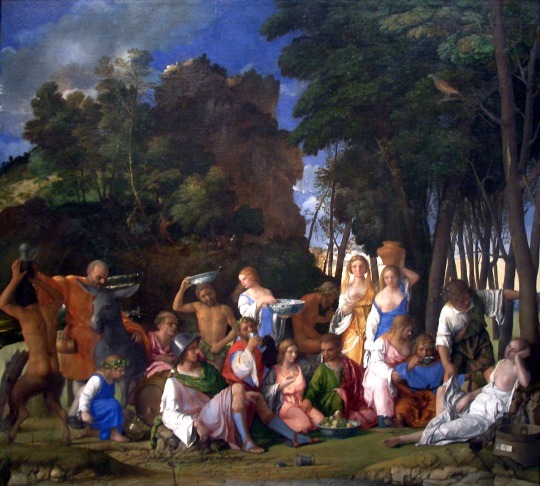
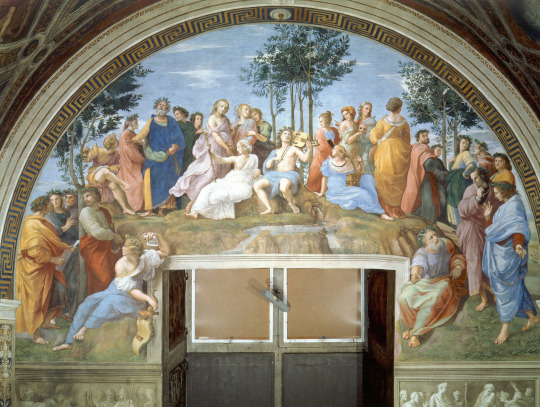
SENSI DELL'ARTE - di Gianpiero Menniti
LA VIOLENZA DELLA TRADIZIONE
Non è mai semplice, per il nostro tempo, comprendere l’opera d’arte che risale nei secoli, la sua origine, la sua ragione, la sua finalità.
Si dimentica che l’artista solo tra Ottocento e Novecento ha realizzato la propria libertà d’espressione e soprattutto di scelta dell’oggetto rappresentato.
E si tralascia anche la sottile distanza che ha sempre connotato il contenuto, frequentemente richiesto e riproposto, dallo stile della composizione: il medesimo “oggetto” muta attraverso pochi cenni delle figure, la scena, lo sfondo, la luce, i colori.
Così, l’oblio della memoria consuma anche il vero significato della tradizione: non pedissequa ripetizione dell’immutabile ma sempre il riflesso di un’interpretazione.
L’interpretazione configura il tradimento: la stessa etimologia del tardo latino lascia scivolare la “consegna” in un passaggio che altera di per sè la cosa rimessa.
Si tratta di un tradimento necessario, pena la fine stessa dell’espressione d’arte.
Ma un tradimento che poggia le sue radici su un’interpretazione che precede: ermeneutica di un’ermeneutica.
Non importa che sia un testo letterario o un testo pittorico: lo sguardo abbraccia sempre un’immagine.
L’origine scompare.
Così, al “Parnaso” (1495 - 1497, Louvre, Parigi) di Andrea Mantegna (1431 - 1506) che trasuda esibita regalità, si contrappone il “Festino degli dei” (1514, National Gallery of Art, Washington) di Giovanni Bellini (1429 - 1516) dal quale emerge il riflesso sorprendente di una nascosta “ricreazione” delle figure divine: appartate, finalmente lontane dagli occhi mortali, abbandonano la loro funzione regale, la partecipazione alle vicende umane fino a raccogliersi nella modestia dei gesti.
Pochi anni dividono questi due dipinti.
Eppure, lo spazio temporale non giustifica l’abisso della dissonanza.
Tra i due, il “Parnaso” (1510 - 1511) della Stanza della Segnatura (Musei Vaticani), l’affresco realizzato da Raffello (1483 - 1520) che mostra dei e mortali uniti nella celebrazione della poesia.
Ecco l’anello di congiunzione.
Ma è di nuovo un tradimento.
Ancora la violenza dell’interpretazione.
Il trascendimento della tradizione è, infine, il segno di un passaggio d’epoca.
Che fa violenza al passato.
A similitudine del processo naturale di nascita e di morte.
Nulla permane.
Niente è mai assoluto.
Nella vita come nell’arte.
24 notes
·
View notes
Text
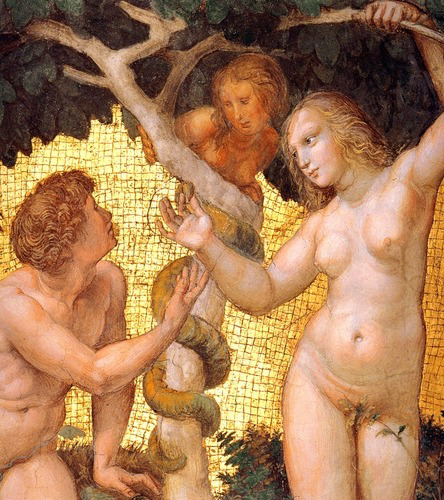
Hundreds of beautiful art about Adam& Eve.
Follow my adam-eve.tumblr.com
(Link in header)
Like this one:
Adam and Eve, from the ‘Stanza della Segnatura’ (detail), by Raphael (1511)
70 notes
·
View notes
Photo

Anton Raphael Mengs (German, 1728–1779)
Parnassus, after 1761
Hermitage Museum
This painting represents a sketch or a replica, produced by the author himself, of the central part of the ceiling in the main hall of the Villa Albani in Rome. The plafond created by Mengs in the fresco technique, in 1761, was commissioned by Cardinal Alessandro Albani. In this painting Mengs broke away from Baroque tradition and turned to the conventions of Neoclassical art. The general composition is inspired by Raphael’s fresco ‘Parnas’ in Stanza della Segnatura in the Vatican Palace in Rome.
In the centre is Apollo Mousagetes, the Sun God, patron of the arts and the leader of the Muses, with his attributes of a lyre, a crown on the head and a laurel wreath in his hand. Seated to his right is Mnemosyne, the mother of the Muses and the goddess of memory, as well as Clio, the Muse of history, Thalia, the Muse of comedy, and the dancing Erato and Terpsichore. To his left is Calliope, Polyhymnia, Euterpe, Melpomene and Urania. The painter depicts the Muses with their attributes. Clio’s features bear a close resemblance to those of Mengs's wife Margarita, while Mnemosyne has a likeness to Vittorucchia, the daughter of Countess Ceroffini.
#Anton Raphael Mengs#German art#germany#european art#mediterranean#classical art#art#traditional art#oil painting#1700s#europe#greek mythology#cradle of civilization
35 notes
·
View notes
Photo

stanza della segnatura
artwork by rafaello sanzio
vaticano (roma)
10 notes
·
View notes
Text

Raphael Adam and Eve, Stanza della Segnatura 1509-11
37 notes
·
View notes
Text
Investigación acerca de Raffaello Sanzio
Nacido en el año 1483 en Urbino, Italia, Rafael demostró un don innato para el arte desde muy temprana edad. Fue su padre, el reconocido pintor Giovanni Santi, quien lo inició en el mundo de la pintura. Bajo su tutela, Rafael pudo desarrollar su habilidad técnica y su pasión por la belleza estética.
A la temprana edad de diecisiete años, Rafael se convirtió en aprendiz del destacado pintor Perugino, en la ciudad de Perugia. Fue durante estos años que comenzó a perfeccionar su estilo y adquirir las herramientas necesarias para destacarse como un verdadero maestro del arte.

Luego de cumplir su tiempo como aprendiz, Rafael decidió embarcarse en un viaje a Florencia en busca de nuevas inspiraciones. Esta ciudad, considerada en ese momento como el epicentro cultural del Renacimiento, albergaba a genios del arte como Leonardo da Vinci y Michelangelo Buonarroti. No es sorprendente que Rafael se viera influenciado por estas grandes figuras y que su arte comenzara a adquirir una identidad única.
Fue precisamente en Florencia donde Rafael creó algunas de sus obras maestras más conocidas, como "La escuela de Atenas" y "La Madonna del Prado". Estas pinturas demostraron su dominio de la perspectiva, la anatomía y la composición, alcanzando una armonía y equilibrio apenas igualados.
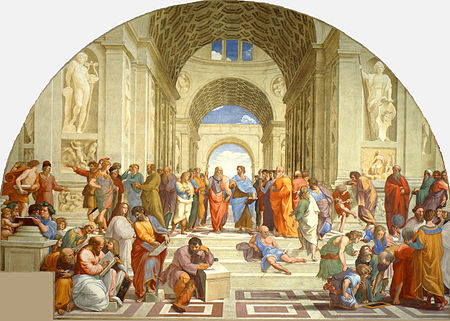

Sin embargo, su fama no se limitó a Florencia. En 1508, el papa Julio II lo llamó a Roma para trabajar en el Vaticano. Fue en la Ciudad Eterna donde Rafael dio vida a sus obras más impresionantes. Uno de sus mayores logros fue la decoración de la famosa Stanza della Segnatura, ubicada en los Apartamentos Vaticanos. Allí, su talento se manifestó en frescos magníficos que retrataban temas tan diversos como la Filosofía, la Teología, la Literatura y el Derecho.

Rafael también creó una serie de retratos que capturaban la esencia y la personalidad de los individuos que tenía el honor de pintar. Entre esos retratos se encuentra el de "Baldassare Castiglione", una obra que mostraba la elegancia y gracia en cada pincelada.

En 1520, a la edad de treinta y siete años, falleció en Roma repentinamente, dejando tras de sí un legado que perduraría a lo largo de los siglos.
3 notes
·
View notes
Text
Raffaello Sanzio: Grazia e Bellezza nel Rinascimento
Raffaello Sanzio era un talento emergente dell’arte italiana fin da giovane. Papa Giulio II lo chiamò per decorare le Stanze Vaticane. Qui, Raffaello creò opere straordinarie, come gli affreschi della Stanza della Segnatura.
Il papa lo apprezzò molto e lo fece diventare famoso in Italia. Raffaello ricevette molti incarichi e divenne uno dei maestri del Rinascimento.
Punti Chiave
Raffaello…
#Maestro delle stanze vaticane#Opere d&039;arte rinascimentali#Pittura rinascimentale#Raffaello Sanzio#Rinascimento Italiano#Storia dell&039;arte italiana
0 notes
Text

ᡴꪫ aka reverie’s history lessons for ‘til death do us part we do art !! any lore/historical info i want to share for anyone who is interested. <3
⟢ 𝐌𝐀𝐒𝐓𝐄𝐑𝐋𝐈𝐒𝐓. SUMMARIES. SERIES PLAYLIST.
+ any asks concerning the series = # ꫂ ၴႅၴ ‘TDWDA .ᐟ
i have like 10+ tabs open every single time i’m writing for this series for research, so this is mostly me to refer back to but i thought i’d just share some of the things i’ve learned that i incorporated into the story! (she just loves history lol.) excuse typos; not proofread.
includes my intentional historical inaccuracies, inspo, & easter eggs ;) also, prev. chapters may be updated too towards the end, to reveal other facts that would’ve spoiled the ending.

i. SHE PAINTED THE HIGH RENAISSANCE ONTO HER BLANK CANVAS
ART HISTORY REFS MENTIONED: stanza della segnatura (rooms in the pope’s palace raphael painted), the sistine chapel, nicknames (da vinci- renaissance man; michelangelo- il divino) madonna del granduca (raphael), statue of david, tragedy of the tomb (michelangelo)
INFO INSPO :
TAILORS would actually incorporate a person’s personality & family style into the clothes that they made. i found that really cool—everything was more custom!
speaking about clothes—dazai mentioning that fyodor was probably irritated because the pope forced him into a suit? fyodor keeping the same outfit…up until he turned into bram, and also, michelangelo was the same way. he dressed like a peasant, not bothering to go above that.
LA VOLTA (literally "to turn") really was the most controversial dance during the renaissance era! previously, men & women would touch palms at most; this dance changed that. there were disputes from the church, dance defenders arguing it wasn't good for health (because of the fast pace and turns), etc. anyway, dazai's entire scene is actually inspired from elizabeth (1998; i never watched the movie, but i came across it while researching the dance)—the scene where queen elizabeth dances w/ sir robert. i also think this was a nice touch because the scene in the movie was inspired by a painting of just that. (coining the dance being described as “scandalous”.)
THE “TRAGEDY OF THE TOMB” was a real thing! michelangelo indeed was assigned to create pope julius ii’s tomb, but they kept disagreeing so much until the designs for it dwindled down extremely, compared to what it was originally. michelangelo then abandoned the commission, calling it the tragedy of the tomb, and proceeded to leave rome entirely. the project was handed to other artists after.
HISTORICAL INACCURACIES :
FYODOR & DAZAI WEARING SUITS. i’m sorry, i just think the renaissance/medieval doublets are soo ugly imo :’) + wtv they call those puffy trousers…i haven’t even looked up the term to call them LOL. “suit” is a broad term in general so you can still definitely imagine it as them in a historically-accurate outfit if you’d wish !! (but in my mind, they’re wearing suits as if they were princes from a completely different timeline shh)
EASTER EGGS :
the lady with dark curls in a deep red dress who briefly danced with dazai? she’s none other than red (redamantiya) :) thank u darling for watching me struggle & panic while writing this installment + helping me a bit out with osamu + the playlist.
the big three !! dazai and fyodor being love interests ofc, so i had to make ranpo reader’s right-hand man. ;)

to be continued…

reblogging the chapters are cherished; they are what support me the most <3. ノ dividers + support banner by cafekitsune. header graphic mine; DO NOT save.
© AUREATCHI 2024 — no reposts. do not steal/modify or take inspo from TDWDA + its plot w/o asking. no translations.
last updated: 7/12/24.
#৻ꪆ 𓂃 ‘til death we do art#comment on the main masterlist to join the tagslist. <3#bsd manga spoilers btw
15 notes
·
View notes
Text

Autorretrato de Raffaello Sanzio (Urbino 1483 - Roma 1520)
Características
Fecha: 1506
Museo: Los Uffizi
Recopilación: Cuadro
Colocación: C1. Autorretratos - Desde los orígenes hasta el siglo XVII
Técnica: Óleo sobre tabla
Dimensiones: 47,3x34,8 cm
Inventario: 1890 n. 1706
En este cuadro también se reconoció el autorretrato de Raffaello Sanzio cuando era joven, basándose en la comparación con el otro autorretrato del pintor visible en el fresco que representa la Escuela de Atenas en la Stanza della Segnatura en el Vaticano. entre 1509 y 1511 por encargo del Papa Julio II. Aunque están realizados con técnicas diferentes, en ambos retratos el artista se representa con idéntica fisonomía y expresión, el peinado y corte de pelo son los propios del paje de la corte renacentista y el sombrero oscuro, del estilo posteriormente llamado "Raffaella", es el que suelen utilizar los pintores, así como la túnica oscura de la que apenas emerge la camisa blanca: es el sencillo traje de trabajo, en alusión deliberadamente a su profesión, que así declara con orgullo. Los ojos oscuros y los rasgos gráciles son una confirmación del juicio entusiasta que Vasari, en las Vidas, expresa sobre el maestro de Urbino, del que elogia "la gracia, el estudio, la belleza y las excelentes costumbres", así como la perfección en el arte. comparado con el de los pintores Zeuxis y Apeles, recordados por las fuentes como los más grandes del mundo clásico.
La autoría del cuadro quedó definitivamente establecida gracias a las investigaciones realizadas sobre él en 1983, con motivo de la exposición con motivo del centenario del nacimiento de Rafael, celebrada en el Palacio Pitti. Luego fue posible, a través de reflectografías, visualizar el dibujo preparatorio y la aplicación del color, técnicamente muy refinado y compuesto por veladuras brillantes colocadas para transparencia sobre un fondo blanco. Estos elementos demuestran el interés del artista por la pintura flamenca contemporánea, muy apreciada en la corte de Urbino, donde se hospedaron famosos pintores nórdicos como Justo de Gante y Pedro Berruguete.
La fortuna de este cuadro está ciertamente ligada al mito de Rafael, celebrado en vida y casi mitificado, debido a su temprana muerte, ocurrida en 1520, con sólo treinta y siete años.
Los documentos que nos han llegado permiten comprobar que la obra procede de Urbino, ciudad natal de Rafael, donde estuvo ubicada hasta el 24 de septiembre de 1652, en la "cámara" de Vittoria della Rovere, hija del último duque de Urbino y de Claudia. de' Medici. Es posible que los señores de Urbino hubieran querido la efigie de Rafael en su rica colección: de hecho, no sólo fue un gran pintor, sino también un motivo de orgullo y gloria para la ciudad que lo vio nacer. Vittoria della Rovere, comprometida con su primo Ferdinando II de' Medici cuando aún era una niña, trajo las mayores obras maestras de la colección familiar a Florencia como dote en la década de 1630. El autorretrato se inscribe entonces (1663 - 1667) entre los "Retratos de pintores hechos por su propia mano" recogidos por el cardenal Leopoldo dei Medici, primer núcleo de la gran colección de los Uffizi que quería, aún existente y aumentada, así como famoso en el mundo por ser el más rico y numeroso de su tipo.
Aunque no hay certeza de cómo llegó el cuadro a posesión del cardenal, es razonable pensar que fue un regalo de su cuñada Vittoria della Rovere, más que la hipótesis de una supuesta compra por parte del prelado a la Accademia di San Lucas en Roma.
Texto por Simona Pasquinucci
Información de la web de la Gallerie degli Uffizi, fotografía de mi autoría.
1 note
·
View note
Text
Raphael painter
Raphael (born April 6, 1483, Urbino, Duchy of Urbino [Italy]—died April 6, 1520, Rome, Papal States [Italy]) master painter and architect of the Italian High Renaissance. Raphael is best known for his Madonnas and for his large figure compositions in the Vatican. His School of Athens in the Stanza della Segnatura, a room in Pope Julius II’s private apartments in the Vatican, is perhaps the most famous of Raphael’s paintings and one of the most significant artworks of the Renaissance. His work is admired for its clarity of form and ease of composition and for its visual achievement of the Neoplatonic ideal of human grandeur.




0 notes
Text
Pesaro: È tempo della Stradomenica di giugno
Pesaro: È tempo della Stradomenica di giugno.
Tantissimi appuntamenti per scoprire i tesori artistici (come i Musei civici o la Chiesa nel nome di Dio) e archeologici (tramite il percorso dedicato alle Giornate europee dell’archeologia), gli spettacoli (da non perdere la 59° Mostra Internazionale del Nuovo Cinema) e lo shopping (con i due mercati del mattino) di Pesaro 2024, Capitale italiana della Cultura. Ecco il programma della Stradomenica di giugno, iniziativa promossa dal Comune di Pesaro ogni terza domenica del mese.
MERCATO CITTADINO
Orario: 8:00-13:00
Torna, come ogni terza domenica del mese, il tradizionale mercato cittadino. Le bancarelle degli ambulanti coloreranno, dalle 8:00 alle 13:00 piazzale Carducci e le vie limitrofe.
MERCATO DELL’ANTIQUARIATO
Orario: 8:30-19:00
Cambio di location per il Mercato dell'antiquariato che si sposta in piazzale Matteotti (a causa della Mostra Internazionale del Nuovo Cinema presente in piazza del Popolo). Dai libri alle monete, dagli arredamenti agli attrezzi, dagli accessori all'oggettistica, il mercato accoglie oltre 100 banchi di curiosità e valore per chi apprezza l'antiquariato, il modernariato, il vintage e il collezionismo. Ingresso libero.
Info: 0541.827254
LUOGHI DELLA CULTURA
PALAZZO MOSCA – MUSEI CIVICI
Orario 10:00-13:00 / 16-19
Il museo della città che conserva importanti collezioni di pittura, ceramica e arti decorative e ospita nel corso dell’anno esposizioni temporanee.
Ingresso a pagamento, gratuito fino a 18 anni, possessori della Carta Famiglia del Comune di Pesaro
Info 0721 387541
MUSEO NAZIONALE ROSSINI
Orario 10:00-13:00 / 15:00-18:00
Il museo dedicato al grande compositore pesarese per un viaggio a 360° nella sua straordinaria vita e nella sua produzione.
Ingresso a pagamento; gratuito fino ai 18 anni, studenti del Conservatorio Statale di Musica G. Rossini, possessori della Carta Famiglia del Comune di Pesaro
Info 0721 1922156
Palazzo Mosca – Musei Civici
Ore 10.30 e 16.30 Frammenti di estinzione nell’Orologio Climatico
ore 11.30 e 17.30, “Raffaello in Sonosfera®”, viaggio a 360° nel ciclo di affreschi della Stanza della Segnatura dei Musei Vaticani.
Prenotazione obbligatoria, ingresso a pagamento, gratuito fino a 18 anni e per gli studenti del Conservatorio Rossini, possessori della Carta Famiglia del Comune di Pesaro.
Info 0721 387541.
CASA ROSSINI
Orario 10:00-13:00 / 16-19
La casa natale di Gioachino Rossini offre materiali che provengono in gran parte da diverse donazioni di fine ottocento, il nucleo più consistente dal grande collezionista parigino Alphonse Hubert Martel; stampe, incisioni e litografie legate alla vita e all’opera del compositore.
Ingresso a pagamento; gratuito fino a 18 anni, possessori della Carta Famiglia del Comune di Pesaro.
Info 0721 387541
MUSEO ARCHEOLOGICO OLIVERIANO
Orario 16-19
Accolto a Palazzo Almerici e nato dal lascito testamentario di Annibale degli Abbati Oliveri (1708-1789), il museo è stato riaperto al pubblico in un allestimento rinnovato lo scorso dicembre. Il nuovo percorso documenta mille anni di storia del territorio - dal periodo piceno alla tarda età imperiale - e si articola in quattro sezioni espositive, vere e proprie chiavi di narrazione dell’intero corpus delle collezioni: la necropoli picena di Novilara, il lucus pisaurensis, il municipio di Pisaurum e il collezionismo settecentesco.
Ingresso a pagamento; gratuito fino a 18 anni e per possessori Carta Famiglia del Comune di Pesaro
Info 0721 33344
AREA ARCHEOLOGICA DI VIA DELL’ABBONDANZA
Orario 10.30 - 12.30 / 16.30 - 18.30
Costruita fra la fine del I sec. a.C. e gli inizi del I sec. d.C., la domus romana propone al pubblico un innovativo percorso multimediale.
Ingresso a pagamento; gratuito fino a 18 anni, possessori della Carta Famiglia del Comune di Pesaro
Info 0721 387541
AREA ARCHEOLOGICA E ANTIQUARIUM DI COLOMBARONE (strada San Cristoforo 136)
Orario 16.30-19.30
un complesso archeologico unico perché immerso nel verde del Parco San Bartolo
ingresso a pagamento; gratuito fino a 18 anni, possessori della Carta Famiglia del Comune di Pesaro, studenti del Conservatorio Rossini.
Info 0721 387541 [email protected]
MUSEO DELLA BICICLETTA, Palazzo Gradari in via Rossini
Orario: 10-13, 16-19
Il nuovo museo è dedicato alla collezione di biciclette d’epoca divenuto patrimonio della città: 40 bici da corsa in un excursus cronologico dal 1930 fino al contemporaneo, fra cui magnifici “pezzi’ in ferro e acciaio utilizzati dai pionieri del ciclismo di inizio secolo come il primo “Campionissimo” Costante Girardengo.
Ingresso a pagamento; gratuito fino a 18 anni e per i possessori della Carta Famiglia del Comune di Pesaro
Info 0721 387541
I MUSEI CIVICI A PALAZZO CIACCHI via Cattaneo 34
Orario 16.30-19.30
Palazzo Ciacchi – sede di Confindustria Pesaro Urbino - accoglie un percorso espositivo realizzato con dipinti e ceramiche provenienti dai depositi dei Musei Civici e restaurati da Confindustria, dal titolo ‘Mito e devozione’: 62 opere illustrano al pubblico la mitologia, la storia antica oltre a diversi episodi sacri e veterotestamentari.
Ingresso gratuito, prenotazione obbligatoria (0721 387541).
MUSEO DIOCESANO Via Rossini 53
Orario 9.30-12.30, 16.30-19.30
Testimonia l'operato della chiesa pesarese nel tempo ed è accolto negli spazi sotterranei di Palazzo Lazzarini. Le collezioni museali si compongono di reperti archeologici (3 sale) e beni storico-artistici (6 sale).
Ingresso a pagamento, include chiesa del Nome di Dio
Info: [email protected] 0721 68095
CHIESA DEL NOME DI DIO via Petrucci
Orario 9.30-12.30, 16.00-19.00
Ingresso incluso nel biglietto del Museo Diocesano
Info: [email protected] 0721 68095
MUSEO OFFICINE BENELLI
Visita guidata ore 16:00
Ultimo esempio di archeologia industriale di Pesaro, il museo della moto nella sede storica dell’azienda Benelli offre mille metri quadrati con l'esposizione permanente di 150 motociclette dai primi modelli degli anni venti fino all’attuale produzione.
Ingresso gratuito
Info 0721 31508
CASA-MUSEO GIOVANNI GENTILETTI
Strada dei Guazzi 4, Santa Maria dell’Arzilla
Orario: 10:00–13:00 / 15-19:30
La Casa-museo dello scultore pesarese (1947 – 2010) è una fucina-studio da scoprire attraverso sei sale espositive: al piano terra, Superfici, Frammenti e Trittici, al primo piano, Forme Zoomorfe, Aironi e Calendari.
Ingresso con card Pesaro Cult (costo 3 euro, validità annuale), gratuito fino a 18 anni
Info 347 7219106
MOSTRE
ROF 15K
Museo Nazionale Rossini
Orario 10-13, 15-18
l’esposizione riunisce 24 modellini di scena di alcune delle principali opere allestite in 42 anni di Festival, restaurati grazie al lavoro dei Laboratori del ROF.
ingresso gratuito fino ai 18 anni, studenti del Conservatorio Statale di Musica G. Rossini, possessori Carta Famiglia del Comune di Pesaro.
Info 0721 1922156
ATTIVITÀ
Ore 18
Le Giornate Europee dell’Archeologia
Dal Museo Archeologico Oliveriano parte una speciale visita guidata che coinvolge anche la domus di via dell’Abbondanza, seguendo il filo narrativo storico che unisce i due musei, tra vita pubblica e privata dell'antica Pesaro romana.
Costo € 4 a persona, prenotazione obbligatoria: 0721.387541 [email protected]
59° Mostra Internazionale del Nuovo Cinema
L'evento speciale dedicato al Premio Oscar® Giuseppe Tornatore, Carlo Verdone e Dante Ferretti ospiti: programma imperdibile quello della 59^ edizione, che vedrà Pesaro2024 “Capitale del cinema” fino al 24 giugno. Proiezioni ed eventi si terranno in: piazza del Popolo, Teatro Cinema Sperimentale, Cinema in Spiaggia (Bagni Agata 54), Palazzo Gradari, spazio bianco, Centro Arti Visive Pescheria....
#notizie #news #breakingnews #cronaca #politica #eventi #sport #moda
Read the full article
0 notes
Photo

Raffaello Sanzio, The School of Athens - Veneranda Biblioteca Ambrosiana
“It is the largest renaissance cartoon that has survived to this day, and was made by Raphael as a preparatory work for the Stanza della Segnatura in the Vatican...”
#raffaello#raffaello sanzio#the school of athens#drawing#preliminary cartoon#renaissance#stanza della segnatura#raphael rooms#vatican museums
11 notes
·
View notes
Text
ANALYSIS of The School of Athens
Denada Permatasari. 6 November 2017.
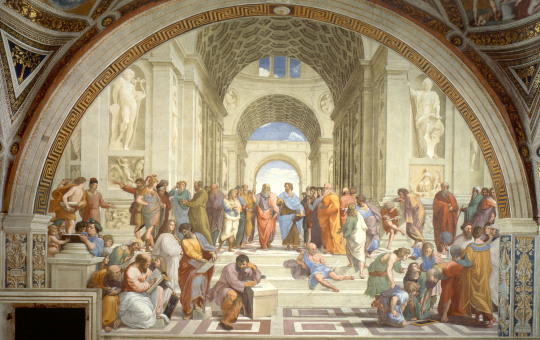
Fig 1.0 Fresco of Raphael's Scuola di Atene (The School of Athens), 1509-11 (courtesy of the Musei Vaticani).
The School of Athens by Raphael Sanzio, or more accurately, Raphael and his studio. This elaborate wall mural is a fresco in the Stanza della Segnatura, Vatican. Measuring 584 cm in length, this artwork was made in 1509 and finished in 1511.
I think that this artwork is a phenomenal masterpiece. From a technical standpoint, it is no debate that the scale and the mastery of human figures are impressive. Every single aspect is carefully planned, apparent from the detail of the backdrop to the individually distinctive figures present in the artwork. The symbolism in this work represent the core of Philosophy through subtle means of the wall division, the composition, down to the character’s body language, where they are situated, and even from the clothes they wear. In this essay, I discuss what all of the previously-stated elements mean and how they come together to give this artwork its meaning, and its significance.
Before delving into analysis of the artwork’s components, it is important to discuss why this artwork was made. This wall mural is part of Pope Julius II’s commission to decorate his private library (Zucker and Harris). The room has four sides, with each side representing the four branches of human knowledge at the time of High Renaissance: Philosophy, Divinity, Poetry, and Justice. The School of Athens, located on the east wall, represents Philosophy and is directly facing Disputa, representing Divinity (Zucker and Harris).
This placement, and the fact that this artwork is no less impressive than Disputa, can be seen as one of the defining attitudes of the High Renaissance: secularization. Here, the religiosity and philosophy are seen as equals, alongside poetry and justice. This is a big step from pre-Renaissance times when religion tended to dominate and rule above all aspects of life (qtd. in Toman iii).
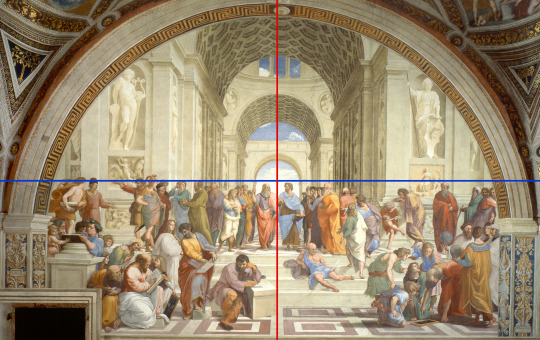
Fig 1.1 Imagined horizontal and vertical lines of The School of Athens.
Moving on to the aspects of form of the artwork itself, I will first talk about its composition. In Fig 1.1, it is shown from the horizontal blue line that “… below the vaulted architecture and celestial backdrop, [Raphael] set the assembly of philosophers in the lower half field, on earth” (Rosand). This means that Raphael deliberately separated man, who is concrete and earthly, from the abstract.
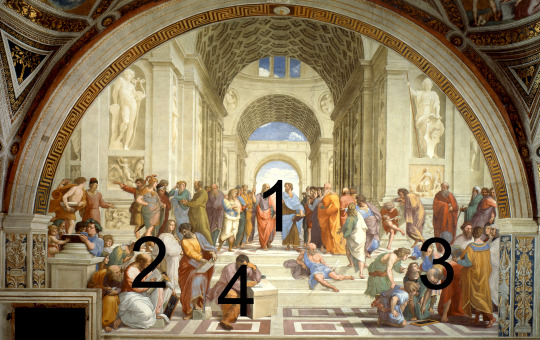
Fig 1.2 Areas of interest in The School of Athens, as labeled with numbers.
Next, the vertical red line between the two figures in the center of the artwork (Area 1 in Fig 1.2). This imagined line serves as a divider for the opposing school of thoughts in Philosophy: Plato, the older man on the left, represents the ethereal and the abstract. He represents the belief that “… there is a realm that is based on mathematics, on pure idea that is truer than the everyday world that we see” (Zucker and Harris). Whereas Aristotle, the younger man on his right, represents the belief “… on the observable, the actual, [and] the physical” (Zucker and Harris).
This divide can be seen from the other characters’ placement in the artwork. In Area 2 (Fig 1.2), which is Plato’s side, are a cluster of people who are also concerned who explains the world from an abstract, cosmic lens (Rosand). This is contrasted by the group of people (Area 3) in Aristotle’s side, who explains the world through factual and concrete means (Rosand). I shall explain how I know the aforementioned observations through analyzing the elements, aspects of form, and the identity of each figure that makes up The School of Athens.
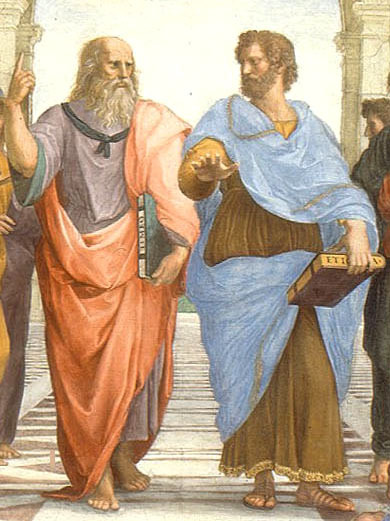
Fig 1.3 Zoom in of Plato and Aristotle.
First, the two main figures (Fig 1.3) in the center of the fresco (Area 1). They are separated from the others by the arc frame of the background. I have said before that the older man on the left is Plato, and the younger man is Aristotle, Plato’s pupil. They are also holding their own books, Plato with his Timaeus, and Aristotle with his Ethics. This section of the essay will highlight how the subject matter and design elements reflect the meaning of the divide in schools of Philosophy.
Plato, representing the ideal and the abstract, wears purple and red. “… The purple, referring to the ether, what we would call the air, [and] the red to fire, neither of which have weight” (Zucker and Harris). Whereas “Aristotle wears blue and brown, that is colors of earth and water, which have gravity [and] weight” (Zucker and Harris). This contrast between the abstract versus the concrete is further compounded by their body language: Plato, pointing up to the heavens, to the realm of high thinking, his bare feet just merely planted on the ground. Aristotle, his hand splayed downwards to the ground, wearing gilded sandals, feet firm on the tiles (Rosand).
Second, the homage to ancient antiquity, apparent in the pagan sculptures of Apollo on the top left and Athena on the right (Rosand). The design of the architecture, with coffered barrel vaults, pilasters, et cetera, is ancient Roman design as well. The god and goddess of the ancient times only reinforce the conceptual divide of the artwork, with Apollo, the god of music and poetry, things that are appropriately platonic (Rosand). Then there is Athena, the goddess of war and wisdom, who is more involved in the practical affairs of man (Zucker and Harris).
The architecture design, which is equal throughout the artwork, represents the unifier in this artwork full of divides. They serve as a reminder that even though there is a fundamental divide in perspective, all of them are still under the same branch, Philosophy (Rosand).
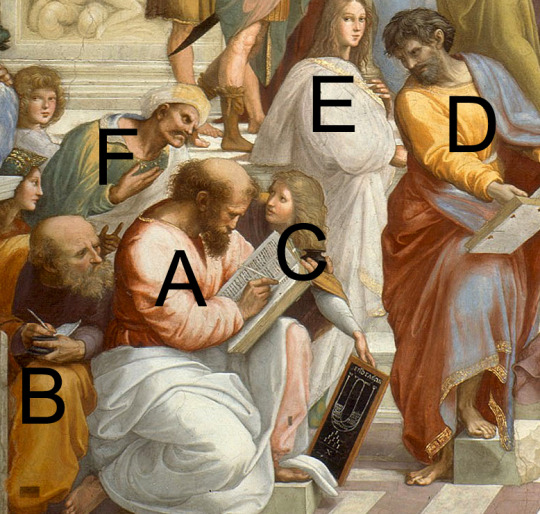
Fig 1.4 The labeling of figures in Plato’s side using capital alphabets from A to F.
Third, the groups of people on Plato’s lower side in Area 2 (Fig 1.2). These figures are labeled with letters (Fig 1.4). Though the identities of many of the figures here is much debated, since Raphael did not leave any notes or annotations, let’s agree for the sake of discussion that:
A: Pythagoras, a Greek philosopher and mathematician who is arguably in the center of this group gathering. He sought to discover the mathematical principles of reality through musical harmony and geometry (Rosand).
B: Boethius, a Greek philosopher who wrote The Consolation of Philosophy (Lahanas).
C: Anaxagoras, a Greek philosopher that correctly explains solar eclipses and the presence of small particles (atoms) in all objects (Agutie).
D: Parmenides, a Greek philosopher who founded the method of reasoned proof for assertions (Agutie).
E: Hypatia, an Alexandrian philosopher, mathematician, and astronomer. She is considered to be the most famous student in the School of Athens (Lahanas).
F: Ibn Rushd (Latin: Averroes), a Spanish-Arab philosopher who wrote commentaries on almost all of Aristotle’s writings and major works of Plato (Agutie).
All of the figures in this cluster are concerned with the cosmic, bigger-picture truths, echoing Plato’s ideals. Moreover, two figures in this cluster deserve special attention: Hypatia and Ibn Rushd. Hypatia’s placement in Plato’s side is reminiscent of Plato’s principle of women’s equality (Fakhry), in fact she is the only woman in the whole artwork. On the other hand, Ibn Rushd’s placement in Plato’s side is curious, since he is more associated with Aristotle’s works more so than that of Plato’s (Fakhry). Even so, Raphael must be commended for including a woman as an equal with men and a Muslim figure, which was seen as radical and out of line in his era.
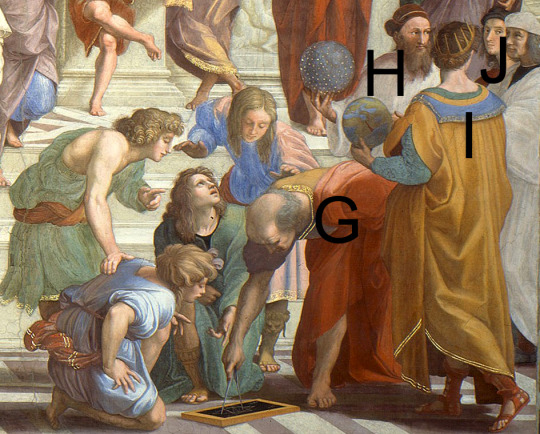
Fig 1.5 The labeling of figures in Aristotle’s side using capital alphabets from G to J.
Fourth, the group that represents Aristotle’s way of thought in Area 3 (Fig 1.2), concerned with the physical and the concrete. They are labeled with letters (Fig 1.5), with identities as follows:
G: Euclid, a Greek mathematician. He is the father of geometry and is seen bent down, applying geometry with a compass to a tablet, flat on the ground (Rosand).
H: Zoroaster, a Greek astronomer, founder of Zoroastrianism, holding a celestial orb (Agutie).
I: Ptolemy, the royal astronomer, who was the first to believe that all heavenly bodies revolve around the earth (Agutie).
J: Raphael, the artist himself in black, and his mentor in art, Sodoma, in white (Lahanas).
The figures in Aristotle’s side are arguably more interesting than Plato’s, as there is more diversity in terms of the principles that the figures represent. Of course, they are all still united in their more earthly and human-centric concerns, but the inclusion of the artist’s self-portrait is the main highlight of this area of interest. For Raphael to include himself is a historical statement, as stated by Dr. Beth Harris, “… here, the artist is considered an intellectual, on par with some [of] the greatest thinkers in history” (Zucker and Harris).
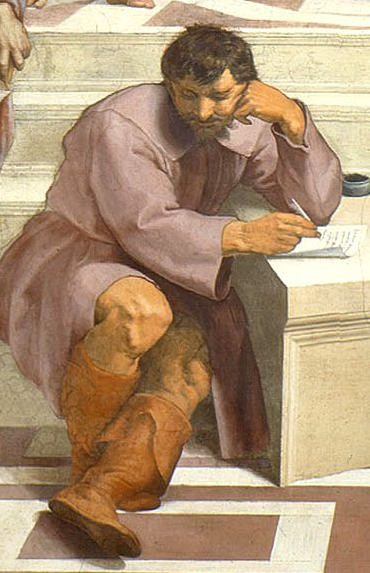
Fig 1.6 Zoom in detail of Heraclitus.
Last, but certainly not least, is the lone figure of Heraclitus (Fig 1.6), an ancient philosopher that sits and thinks alone, separated from the others (Area 4 in Fig 1.2). What makes this figure stand out is the fact that he is a deviation from the orthogonal perspective of the whole artwork. Apart from Diogenes, who is sprawled on the steps, also by himself, Heraclitus feels out of place in the artwork. This is because Heraclitus was actually added after the fresco was finished (Rosand).
At this point, I will discuss the personal aspect that Raphael weaved throughout this commission; Heraclitus’ figure is one of them. The model for this ancient philosopher is actually based off of Michelangelo, and this insertion, this acknowledgment of the older artist is very curious in of itself. The personal antipathy between them is well known; Raphael, the sociable and cultured artist was intensely disliked by Michelangelo, the brooding and melancholic artist, who accused him of stealing his ideas from the Sistine ceiling (Hale 274). For Raphael to include him in his impressive fresco can be said as an homage or a tribute to Michelangelo (Rosand). This speaks of Raphael’s respect and regard for the other artist despite their differences.
Heraclitus is not the only figure who is modeled after someone else –in fact, most of the major figures in this artwork are modeled after someone else- take, for instance, Plato who is actually modeled after Leonardo da Vinci (Toman 336), an artist that highly inspired Raphael. For him to model Plato, the central figure of his fresco and one of the greatest thinkers of all time after Leonardo is a significant honor to his person. Another instance is Euclid. The geometer is actually modeled after Bramante the architect, Raphael’s friend and professional companion (Toman 336). His tribute for Bramante doesn’t end there; the architectural design of the background is actually inspired by Bramante’s architectural design and vision (Martindale 83).
All of the analysis of the components, and how even the smallest things contribute to a greater meaning, is the main reason why I think this artwork is phenomenal. If anything is to be obvious from my essay, is the amount of planning, effort, and thoughtfulness that Raphael did for this fresco. For me, personally, there is nothing more impressive than a successful execution with an underlying concept that is well thought of in every step of the way. In this, I am very pleased with Raphael’s technical skill to make something so legible on an intimidating scale, yet still retaining a degree of thoughtfulness that is apparent in every single dot of his fresco.
To further compound this, I am not the only one who thinks that this artwork is extraordinary. The School of Athens has received high regard from the moment of its completion, even until the present day. The Stanza della Segnatura has been a famous tourist attraction because of the wall frescoes that Raphael made, and The School of Athens is arguably the main attraction in the Vatican Palace.
Most importantly, however, is Raphael’s own influence on the High Renaissance, and what follows after. As Johan Huizinga, a Dutch art historian has stated:
The Renaissance marks the rise of the individual, the awakening of a desire for beauty, a triumphal procession of joyful life, the intellectual conquest of physical realities, … a dawning of consciousness of the relationship of the individual to the natural world around him (qtd. in Toman i).
To attribute all of those values of the Renaissance to just The School of Athens is optimistic at best and naïve at worst, but it is worth acknowledging that The School of Athens is one of the main highlights of the High Renaissance, and certainly sums up the entirety of the High Renaissance. In this light, Raphael deserves much acclaim, as written by Luitpold Dussler in his book Raphael:
Raphael has left an indelible mark on art. He revolutionized portrait painting … and epitomized the style which has come to be known as High Renaissance. … Perhaps Raphael’s greatest achievement is that he appeals on all levels and makes something profoundly deep and complex appear simple and comprehensible (qtd. in Hale 275).
In conclusion, the value of Raphael’s The School of Athens is that it is invaluable. It was significant by the time it was completed, and is still significant even today, more than five hundred years later. More than just a room decoration, it speaks of the general perspective of Philosophy during the early 16th century. Raphael’s ability to condense such a difficult, multi-faceted discipline into a thoughtful work of art that can be appreciated by anyone, at any level, is a testament to his remarkable technical skill and conceptual knowledge.
I will end my essay with one conviction: that The School of Athens is one of the definitive artworks of the High Renaissance, and I hope that the significance of attributing an entire period to one single artwork is realized and acknowledged.
Works Cited
Zucker, Steven and Beth Harris. “Raphael, School of Athens.” Smarthistory. 27 Jul. 2014. 3 Nov 2017.
Toman, Rolf. Introduction. The Art of the Italian Renaissance. Germany: Könemann, 1995. Print. i, iii, 336.
Rosand, David. “Raphael’s Fresco of The School of Athens in the Stanza della Segnatura of the Vatican Palace.” Columbia University. New York. N.d. 3 Nov 2017.
Lahanas, Michael. “The School of Athens, ‘Who is Who?’ Puzzle.” Hellenica World. N. d. 3 Nov 2017 <http://www.hellenicaworld.com/Greece/Science/en/ SchoolAthens.html>.
Agutie. “Raphael (1483-1520): The School of Athens, 1509. Interactive Map.” Geometry from the Land of the Incas. 13 Jul 2014. 3 Nov 2017 <http://agutie.homestead.com/files/school_athens_map.html>.
Fakhry, Majid. Averroes (Ibn Rushd) His Life, Works and Influence. London: Oneworld Publications, 2001. N. p.
“Raphael.” Encyclopaedia of the Italian Renaissance. Ed. J. R. Hale. Lindon: Thames and Hudson,1981. Print. 274-275.
Martindale, Andrew. Man and the Renaissance. London: Paul Hamlyn Limited. 1966. Print. 83.
#raphael#the school of athens#athens#fresco#mural#renaissance#art#stanza della segnatura#vatican#city#plato#aristotle#scuola di atene#essay#analysis#heraclitus#michelangelo#philosophy#steven zucker#beth harris#rolf toman#david rosand#michael lahanas#agutie#majid fakhry#andrew martindale#italy#italian#malphigus#malphiguswrites
39 notes
·
View notes
Text
Raphael 1509–1510 Disputation of the Holy Sacrament, Fresco, Stanza della Segnatura (Raffaello), Apostolic Palace, Vatican City

#Disputation of the Holy Sacrament#Raphael#Fresco#Stanza della Segnatura#Apostolic Palace#Vatican City#Art#Fine Arts#High Renaissance#Painting#Disputation
18 notes
·
View notes
